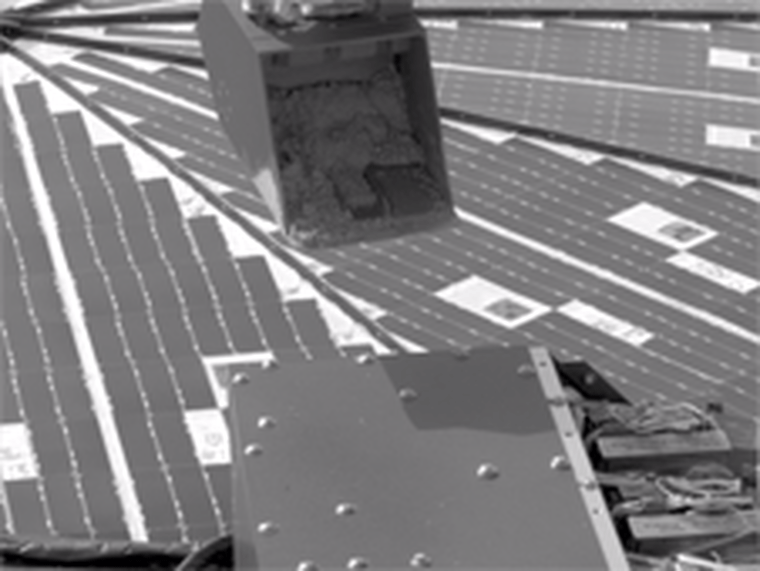Scientists said Tuesday that they were happy with a technique aimed at sprinkling just a spoonful of Martian soil into NASA's Phoenix Mars Lander.
They reported that the scoop on the end of the lander's robotic arm successfully shook a small sample onto the lander's surface on Monday — avoiding a problem with clumpiness that has held up the first scientific samplings for days.
Over the next few days, Phoenix team members plan to instruct the spacecraft to sprinkle soil onto a wheel that will rotate the sample into place for viewing by an optical microscope. Soil also will be sprinkled into one of the eight ovens on the lander's Thermal and Evolved-Gas Analyzer, or TEGA.
The single-use ovens are designed to bake Martian samples and "sniff" the gases given off. The sniffer is capable of detecting traces of organic chemicals — one of the primary goals of Phoenix Mars Lander's $420 million mission.
The robotic arm's scoop dumped a whole load of soil onto one of the ovens on Friday. However, only a few particles of the soil passed through the mesh screen covering the opening to the oven, even after the screen was shaken. Scientists concluded that the soil was bunching up on the mesh, like a load of lumpy flour sitting on a screen.
"This soil is very cohesive and it's very hard for it to get through the screen," mission scientist William Boynton of the University of Arizona in Tucson, who is in charge of the oven experiment, told reporters on Monday.
On Monday, the mission team tried a different method that was worked out months ago by the members in charge of the lander's robotic arm and microscope. A motorized rasp at the back of the scoop was turned on, and jiggled the scoop enough to shake about a tablespoon of the soil off the scoop's edge. The rasp will be used later in the mission to scrape up ice samples around the landing site in Mars' north polar region.
Imagery sent back by the lander showed fine particles falling onto the top surface of an instrument suite that includes the microscope.
"This is good news," Ray Arvidson of Washington University in St. Louis, lead scientist for the robotic arm, said Tuesday in a NASA status report.
Future soil samples may be prepared prior to delivery by chopping and scraping them with blades on the scoop.
Phoenix's agenda for Tuesday included continuing a set of atmospheric observations in coordination with overhead passes of NASA's Mars Reconnaissance Orbiter. These observations take advantage of opportunities for instruments on Phoenix and on the orbiter to examine the same column of atmosphere simultaneously from above and below.
"It allows us to put the Phoenix measurements into global perspective and gives a ground level calibration for the orbiter's measurements," said Phoenix project scientist Leslie Tamppari of NASA's Jet Propulsion Laboratory.
This report includes information from msnbc.com and The Associated Press.
